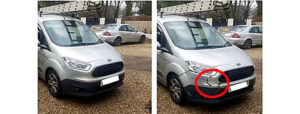Even if you can’t afford a Porsche, Ford GT or a classic in the collectible market, you can at least own part of one — as an investment
Ever thought you would like to buy an Aston Martin? How about a Porsche, Maserati or Ferrari? If that isn’t your style, how about a Tucker? Or a Duesenberg, Cobra or Ford GT? Lots of heads shaking. Not because we don’t all want one, but because we may very well not be able to pay for one. Researching and finding these special cars also takes time. Then there’s storage, maintenance licensing and all the rest.
But there is a way that even we can make our dreams come true today. As I was reading one of the many news sources I follow for ideas and information I happened to run across a new company by the name of Drift Capital. They opened their doors this past September.
According to Barron’s Daily, they are raising $50 million to $75 million dollars to buy collector vehicles, create a portfolio, and then sell shares in the vehicles through stock offerings. While not exactly low brow, and any investment has risks, sure beats the hundreds of thousands or millions any of these cars would cost each of us at auction.
Like many other things, cars come in a few stripes. Our daily drivers. Our Saturday hot rods and 10 footers and then the “classic” or “collectable” market. It’s the last group that has driven over $80 billion dollars globally in auctions and private sales according to a number of sources. The U.S. is the single biggest market. And, cars shot past collectible watches, art, wines and more with a 185% value increase over the past 10 years (CNBC). Only very rare whiskies appreciated more. As I write this, Boomers have a 53% ownership of all these cars in one form or another. This is dropping as people in their 40s and 50s are investing in cars as well.
As an aside, in a number of reports, one factor that is helping to drive this market are EVs. No one wants them. But they are afraid that due to government dictates there will be few choice ICE options, so they are building the stock now. With the disaster that EVs have proven to be, this may be their only bright spot.
While Drift is new, there are others who have different models for achieving the same ends. According to Reuters and company reports, Hetica Klassiks (Sweden) and Azimut (Italy) are asset managers. They are building their own car corrals and selling shares. They both require a $125,000 Euro investment. For that money each has a variety of options.
Then there is Rally. As a company, Rally buys collectibles and classics, packages each as its own business and then sells shares in them. They do everything under the sun including baseball cards, watches, memorabilia, art, cars and more.
For $41.25 a share, you might buy into a pristine 1965 Mustang Fastback. And $64 a share will get you part ownership of a Ford GT. There are more options, too. Or, if you want a piece of the Wayne Gretzky rookie card, that can be had for $40 a share, market value $800,000. Like Rally, there is TheCarCrowd in the UK with a similar approach.
As for the Saturday hot rods and 10 footers? Good news here, too. My old ’68 Pontiac Lemans is worth more today thanks to classics and collectibles shooting through the stratosphere. While I will not get back what has been spent on it in terms of restoration, time and parts, it, too, has appreciated. As the rare ones and special vehicles get away from us due to cost or time, these “plain Jane” fun vehicles are getting caught in the backdraft. There may not be a line of billionaires or investment companies outside our door wanting to buy our ride, it bodes well for them, nonetheless.
So let’s hope the market just keeps going crazy over our old cars. And the next time someone says to us, “I rode in one of those as a kid,” we can smile and know our car is really special, too. As an industry, let’s do what we are able to keep the spirit of these cars alive.
At a young age, industry veteran Tom Langer started detailing cars for his family’s dealerships, which then led to work in the jobber and warehouse business, along with a machine shop and auto body shop. He held a variety of positions with an auto parts manufacturer for 10 years, and remained in the industry working with shops, warehouses and manufacturers in research and more.



Comments are closed.